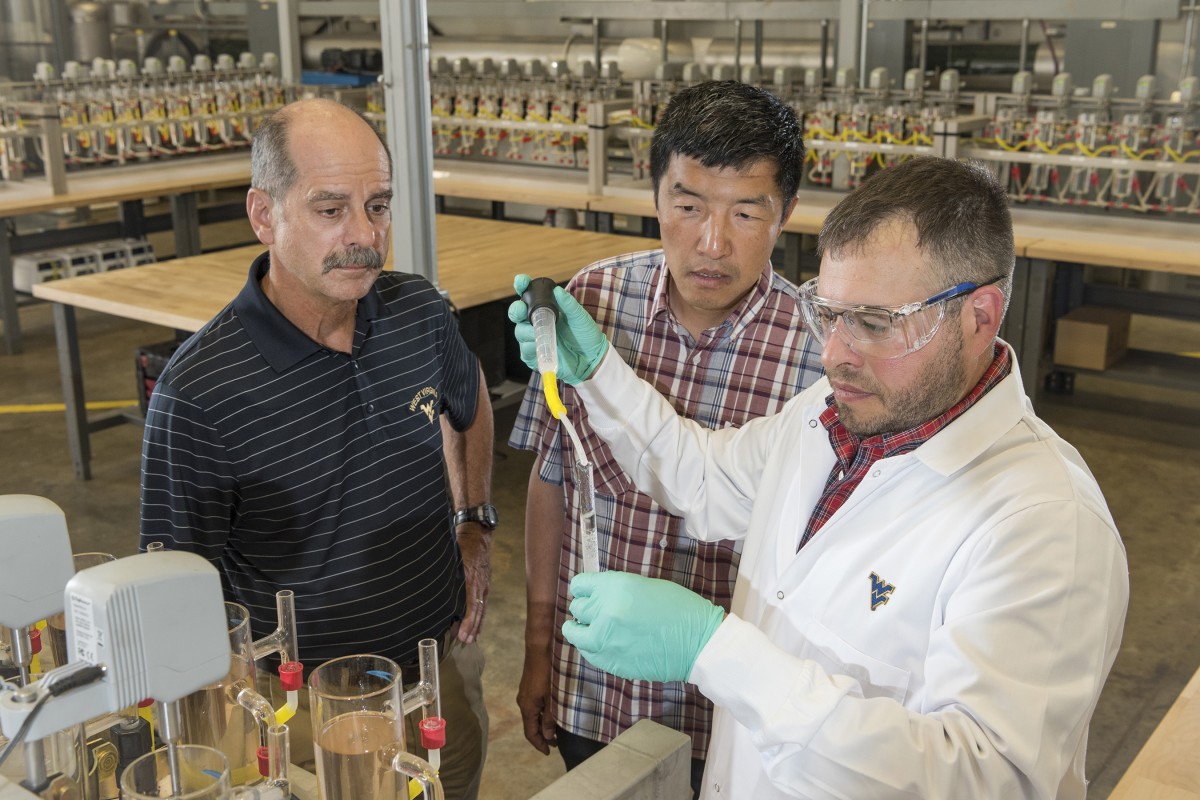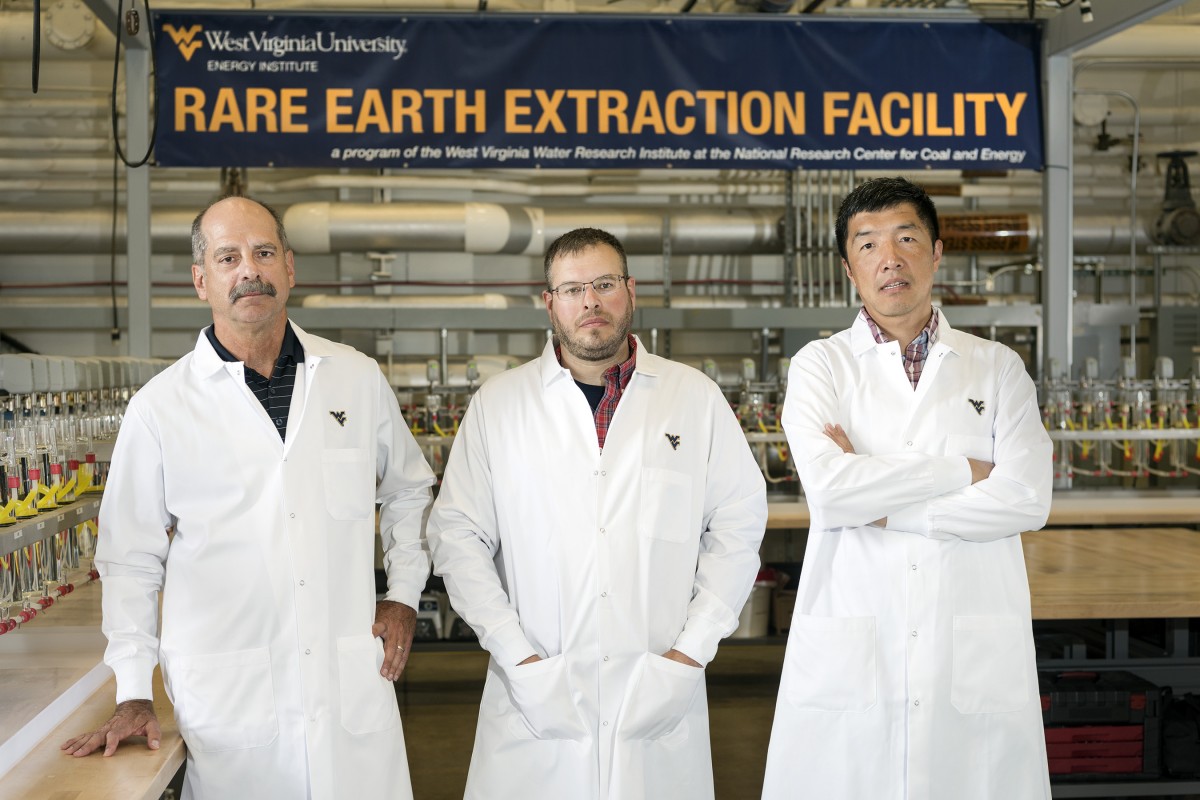MORGANTOWN — WVU researchers are opening a new facility to capture valuable materials from a novel source — acid mine drainage from coal mining — turning the unwanted waste into critical components used in today’s technology-driven society.
Through a collaborative research and development program with the National Energy Technology Laboratory (NETL), part of the U.S. Department of Energy (DOE), WVU is opening the Rare Earth Extraction Facility to bolster domestic supplies of rare earths, reduce the environmental impact of coal-mining operations, reduce production costs and increase efficiency for processing market-ready rare earths.
Additionally, the technology could create jobs, helping to revive economies that have been historically dependent on the coal industry.
“Research on rare-earth extraction is one way that our university is fulfilling its most important mission — which is the land-grant mission — to advance the prosperity of the people of this state,” President Gordon Gee said.
Representatives from WVU, NETL, DOE, representatives from West Virginia’s congressional delegation and others gathered recently in the High Bay Research Lab at the WVU Energy Institute’s National Research Center for Coal and Energy on campus to tour the new Rare Earth Extraction Facility and mark the start of this new phase of research.
Brian Anderson, director of the WVU Energy Institute, hosted the event and conveyed statements of support from the members of the state’s congressional delegation, including Rep. David McKinley and Sens. Joe Manchin and Shelley Moore Capito.
In addition, WVU welcomed keynote speaker Steven Winberg, DOE assistant secretary for fossil energy.
“It’s a pleasure to be in West Virginia, because West Virginians understand what it really means to have an ‘all-of-the-above’ energy strategy,” he said.
WVU is partnering with Rockwell Automation to facilitate market readiness through use of their sensor and control technologies in the new WVU facility.
Paul McRoberts, regional industry mining, metals and cement manager at Rockwell Automation, a 30-year veteran of the industry, said that this is one of the most exciting projects he has been a part of during his career and is he excited to see the results of the new facility.
The facility is the researchers’ phase-two project, worth
$3.38 million, funded by NETL with matching funding from WVU’s private sector partners. It follows on an earlier, phase-one project, worth $937,000, to study acid mine drainage as feedstock for rare-earth extraction. The goal of the pilot facility is to test the technical and economic feasibility of scaling-up the technology to commercialize the separation and extraction process.
In addition, the team will work to define a U.S.-based supply chain including the sludges created during acid mine drainage treatment and upstream to the acid-mine drainage source.
Neither rare nor earth
The name “rare earth elements” is a misnomer for important chemical elements that are actually neither rare nor earths.
A collection of 16 elements that hang off the bottom of the periodic table, they are moderately abundant but well dispersed in the Earth’s crust. They are identified as rare because it is unusual to find them in large concentrations.
The elements are all metals that carry very similar properties. In rare cases they are found in deposits together. Unlike an element such as gold, natural rare earth deposits never occur as pure metals, but are bonded in low-value minerals, making extraction challenging.
Conventional rare-earth recovery methods require an expensive, difficult and messy extraction process that generates large volumes of contaminated waste. China has been able to provide a low-cost supply of rare earths using these methods, and therefore, dominates the global market.
In usable form, these elements are necessary components of modern technologies. They are used in cellular phones, computers, televisions, magnets, batteries, catalytic converters, defense applications and more segments of modern society.






